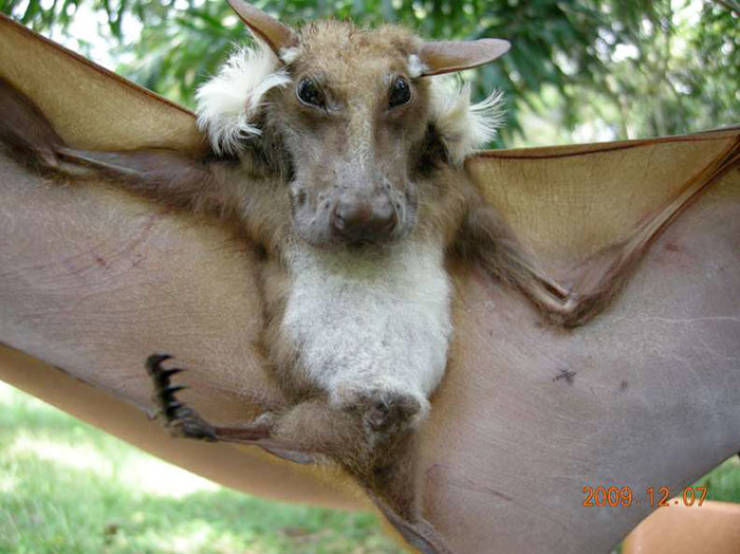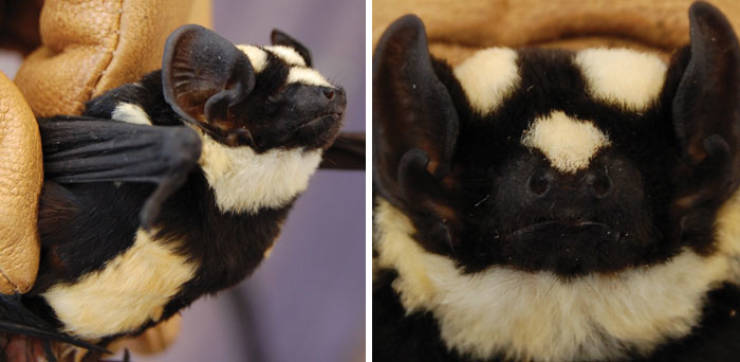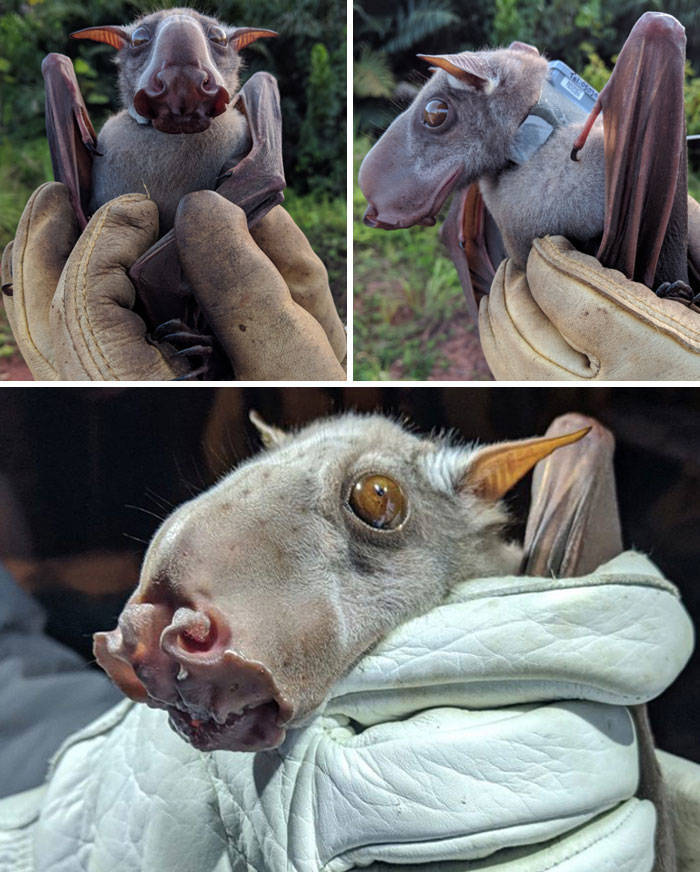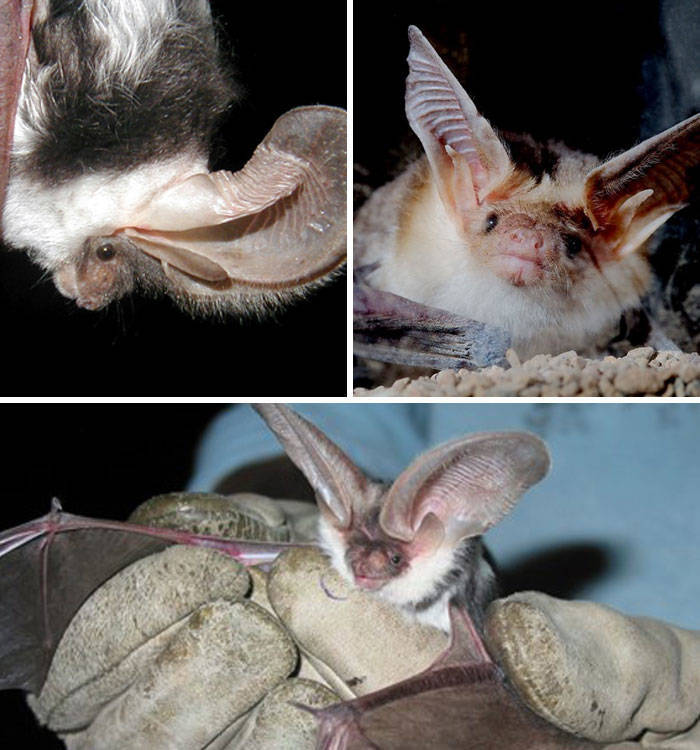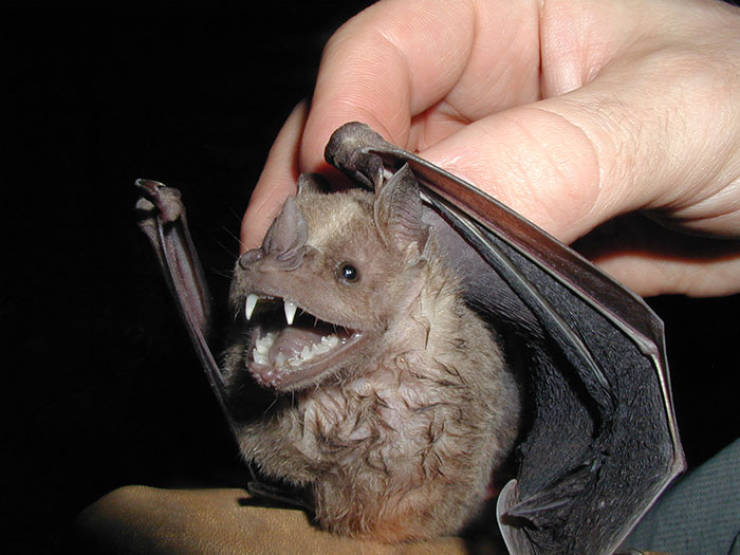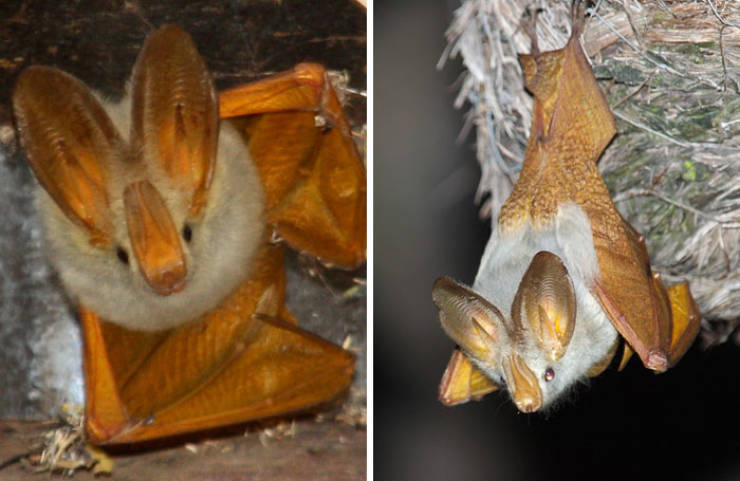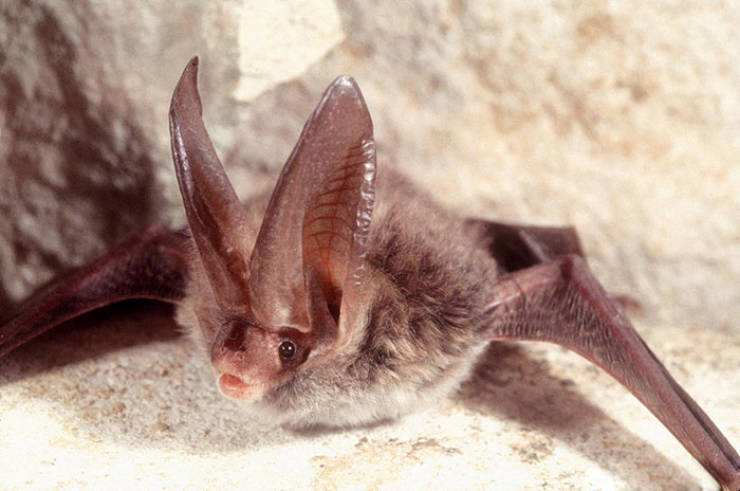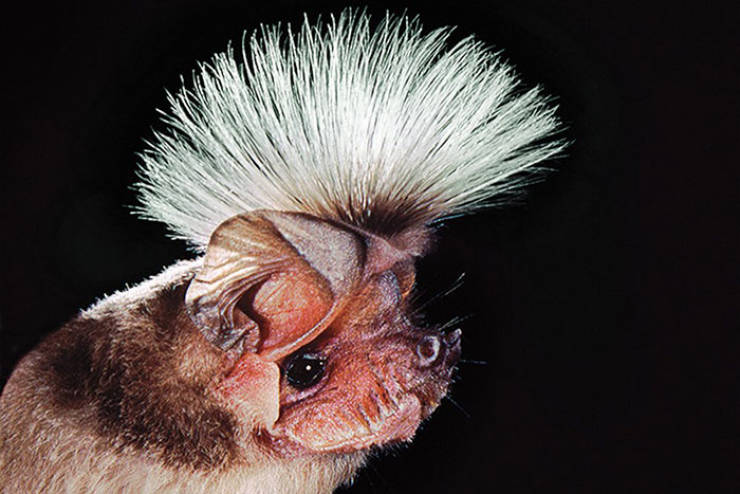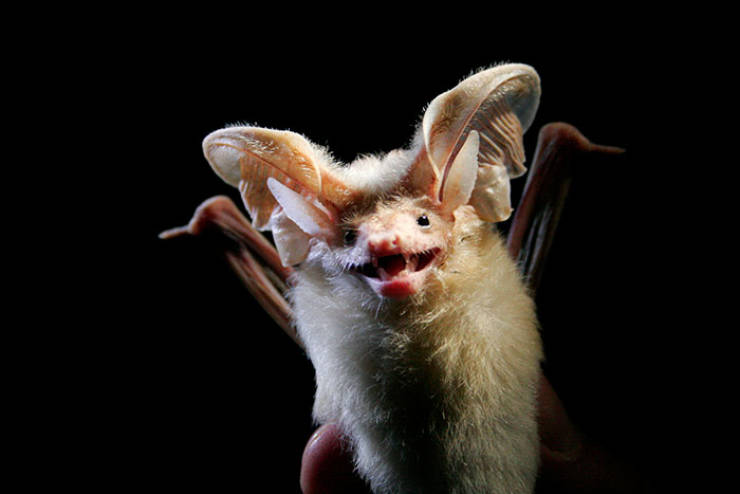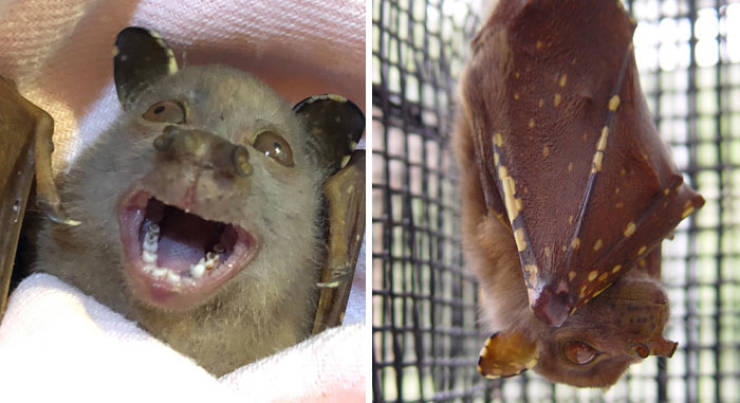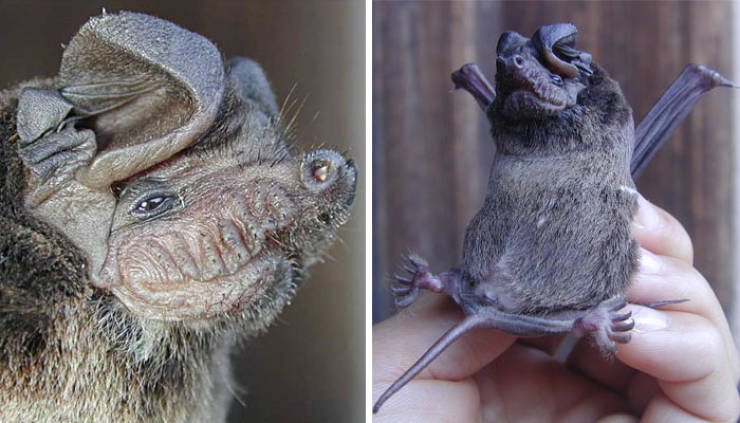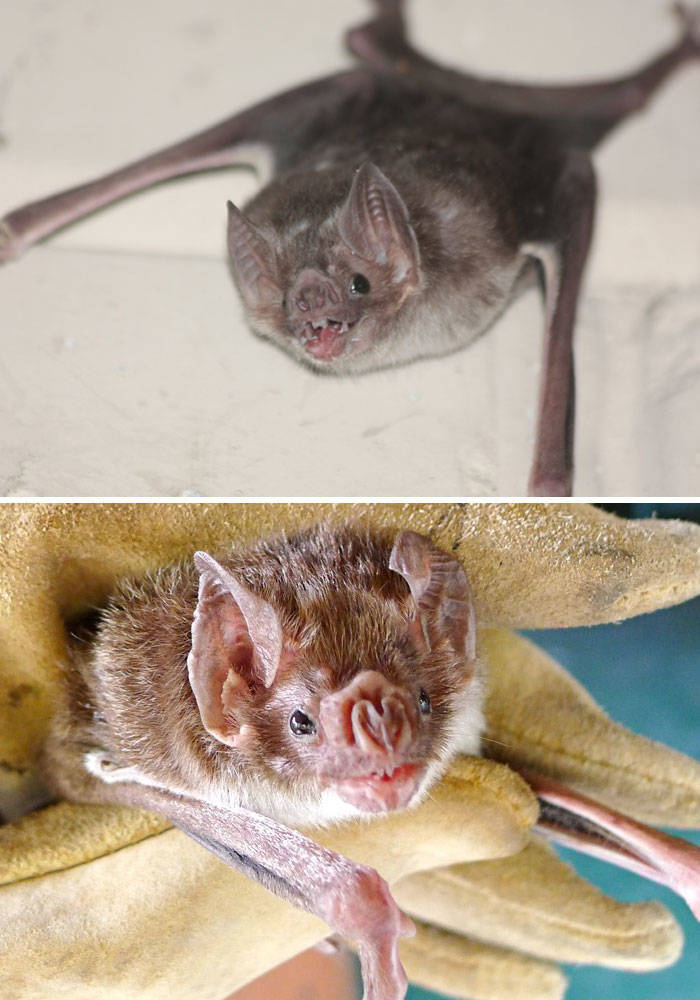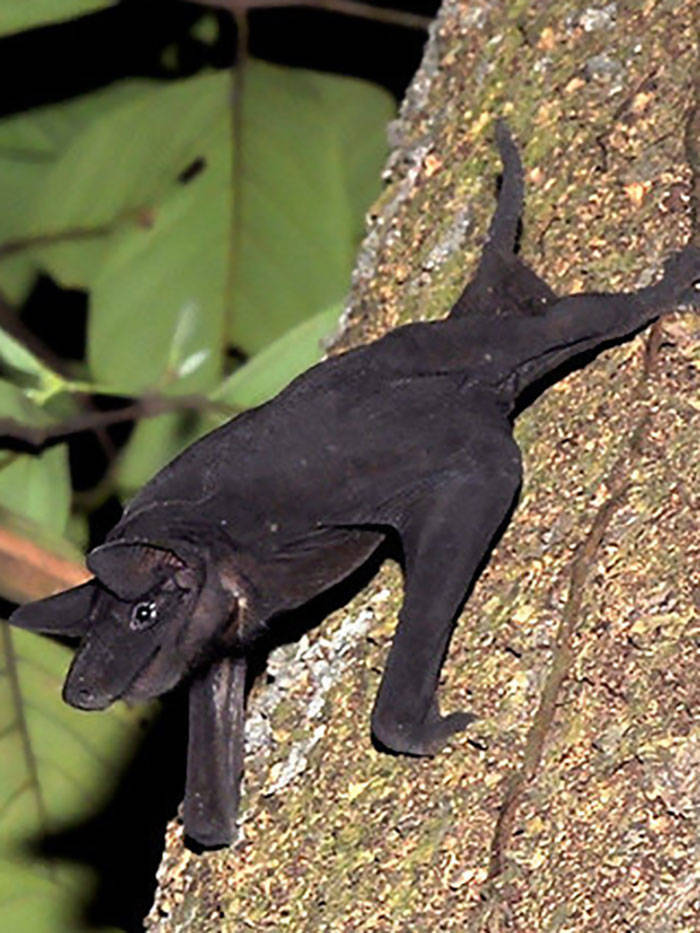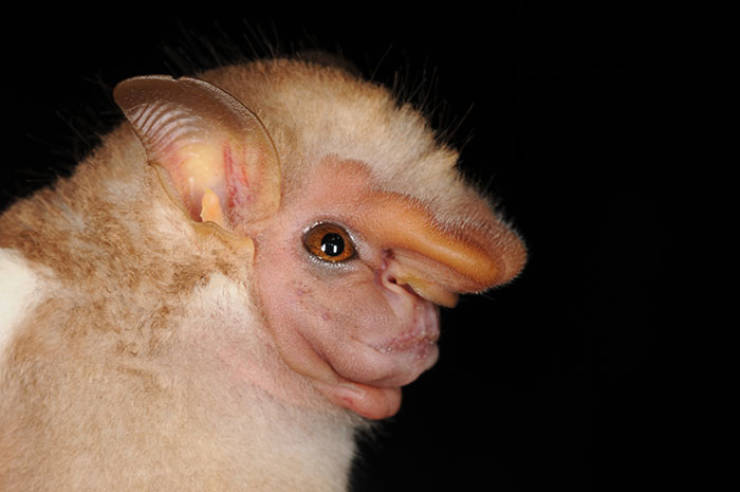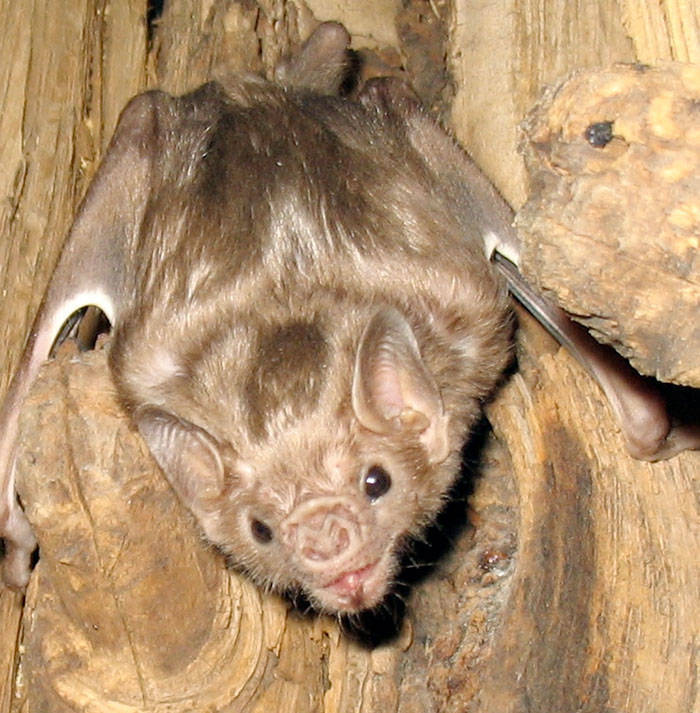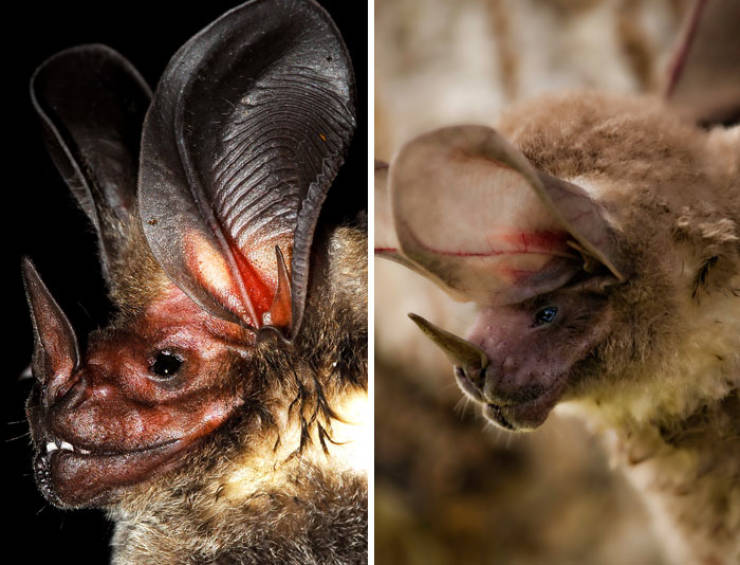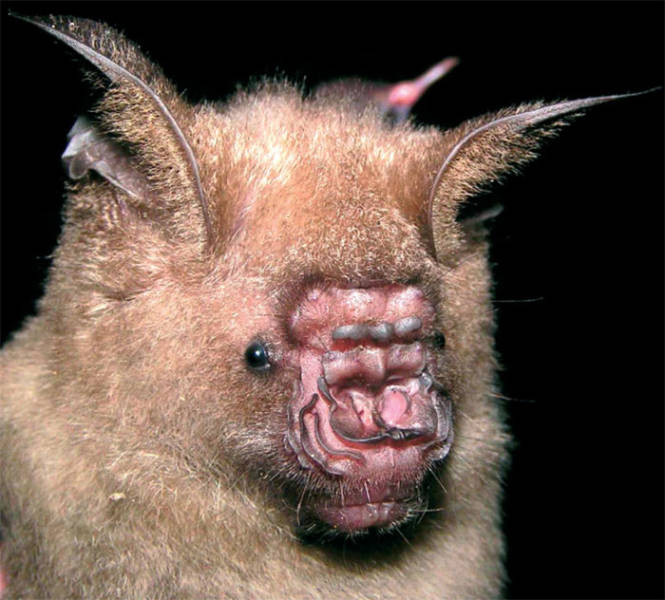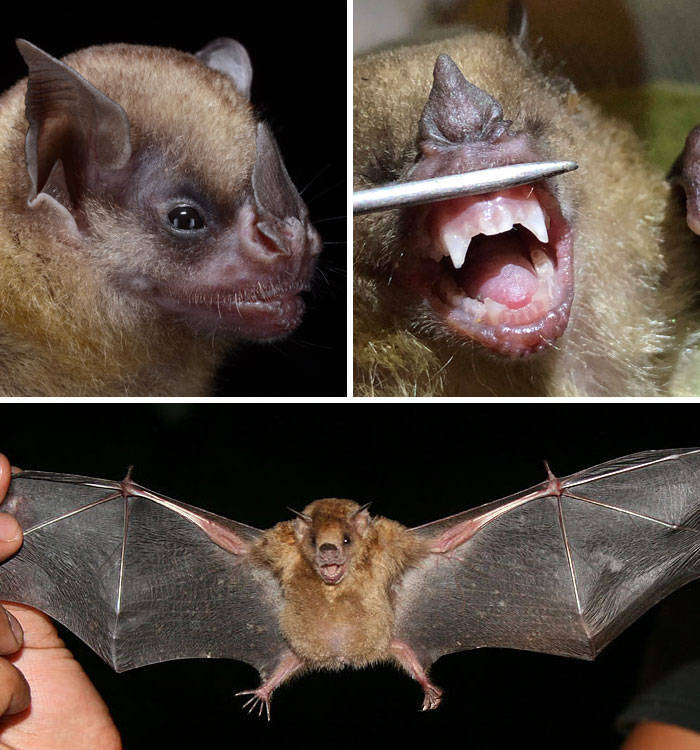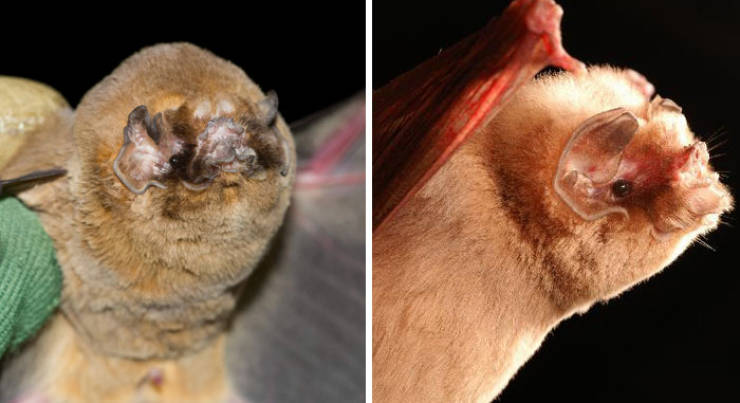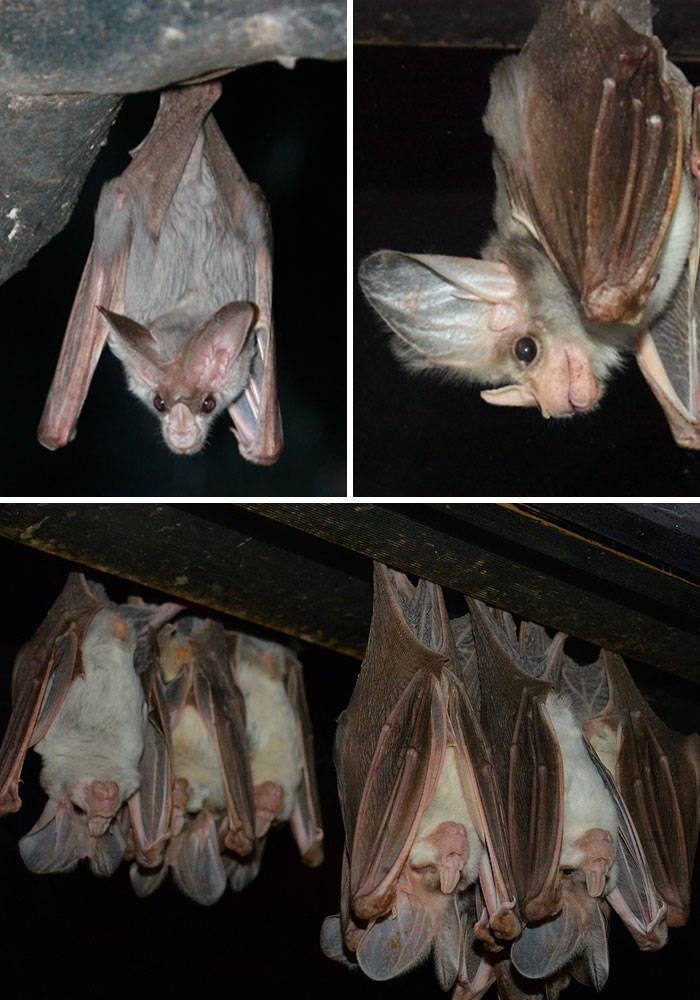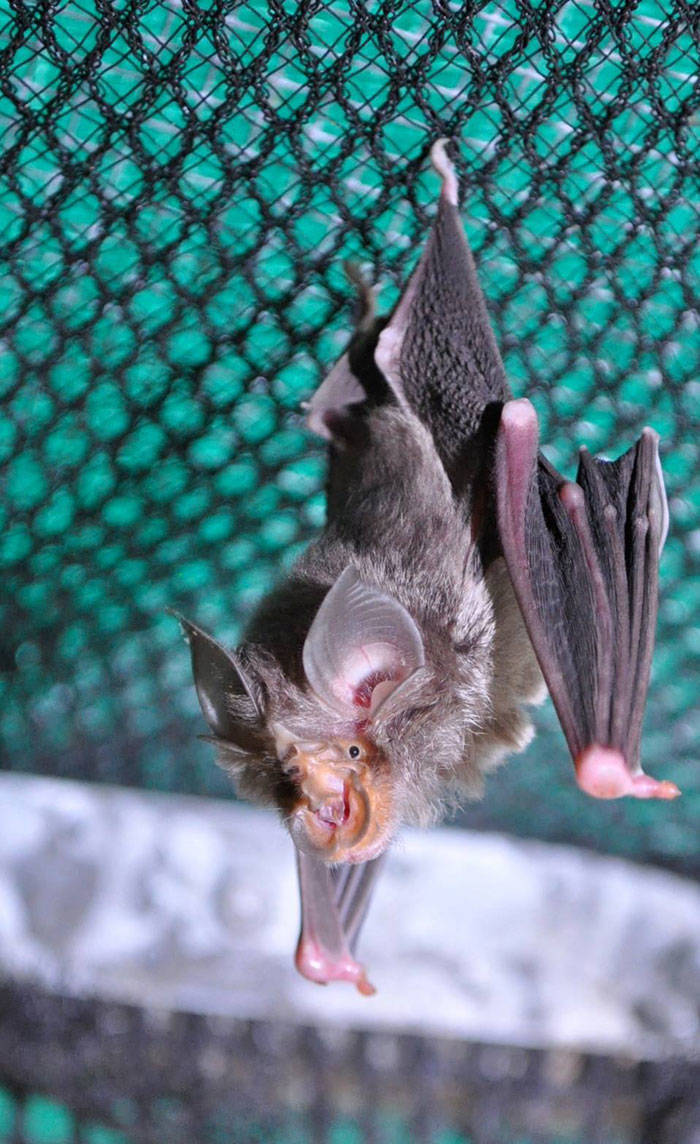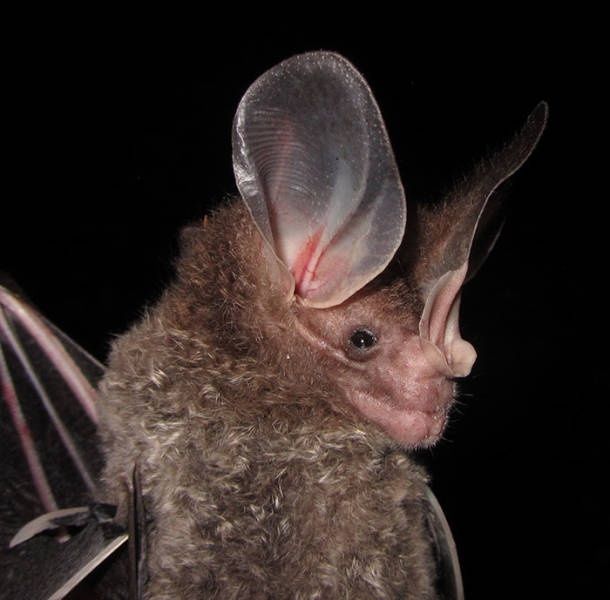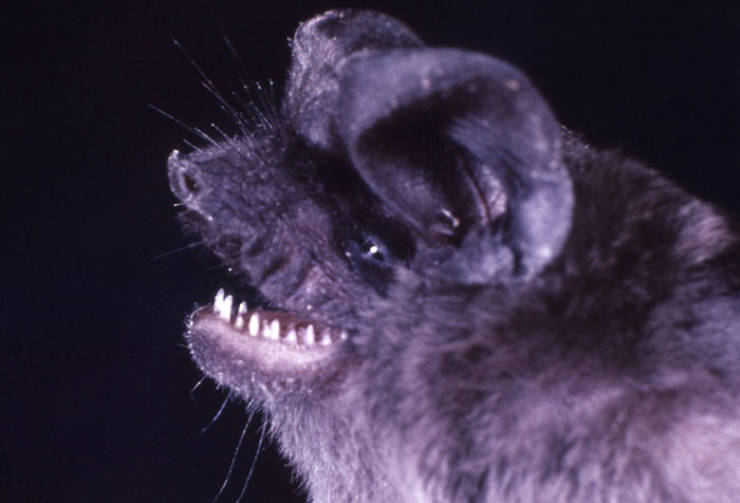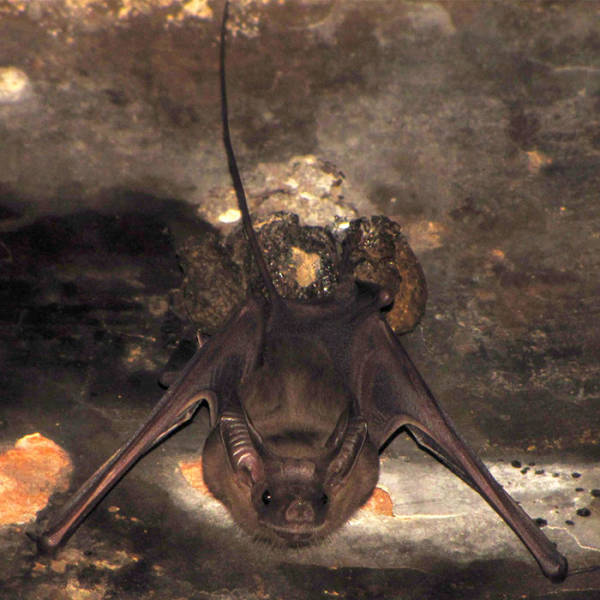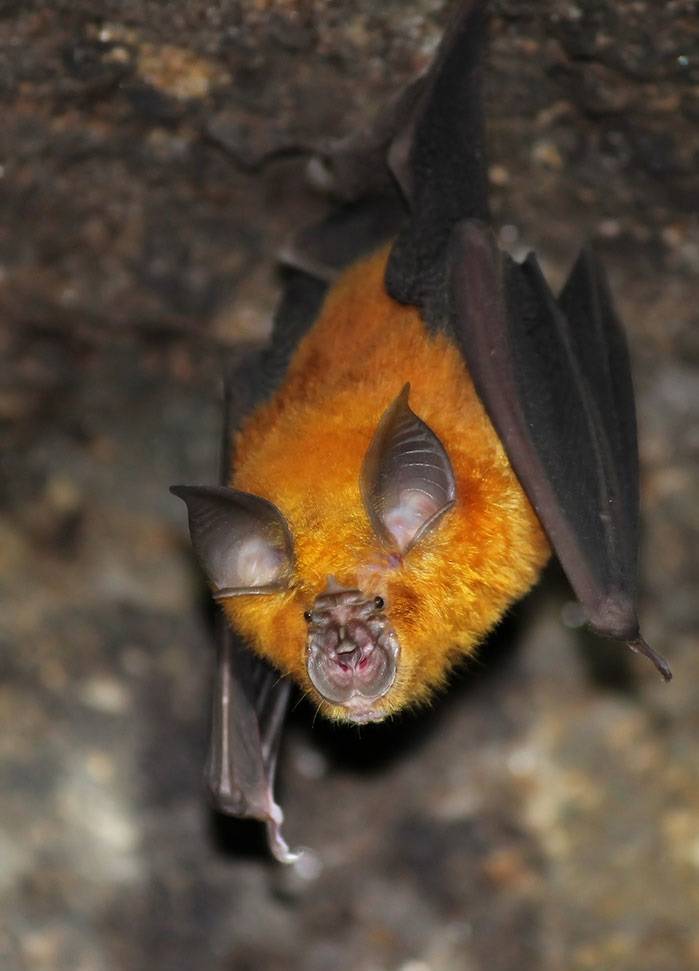Buettikofer's Epauletted Fruit Bat
Despite what it looks like, this is a bat, not a dog. So no pets for this good boy! Buettikofer's epauletted fruit bat is a species of megabats that can be found in Ivory Coast, Ghana, Guinea, Guinea-Bissau, Liberia, Nigeria, Senegal, and Sierra Leone.
Honduran White Bat
These little balls of fluff are called Honduran white bats. They can be found in the lowland rainforests of eastern Honduras, northern Nicaragua, eastern Costa Rica, and western Panama. Honduran white bats have a thin black membrane on top of their skull that is believed to serve as protection from ultraviolet radiation—just like sunscreen.
Pied Bats
The species of pied bats or badger bats resembles a bee; some even compare it to a panda. These little cuties are not only rare, but also truly unique. "Its cranial characters, its wing characters, its size, the ears—literally everything you look at doesn't fit. It's so unique that we need to create a new genus," said one of the species' discoverers DeeAnn Reeder.
Giant Golden-Crowned Flying Fox
While this bat may very cute and may not entirely belong on this list, however, there's something peculiar about it. It is huge. And we are talking close to the human baby-sized kind of huge. Flying foxes have a wingspan of 5 feet (1.5 meters) and their bodies are 11 to 13 in (27 to 32 cm) in length. They are native to Indonesia, Malaysia, China, Myanmar, the Philippines, Singapore, Vietnam, Timor-Leste, and Thailand. The viral one in the picture was captured in the Philippines.
Hammer-Headed Bat
Contrary to what their appearance may suggest, hammer-headed bats are completely harmless. They inhabit equatorial Africa and feed on fruits. In case you're wondering what is up with their faces, they have large resonating chambers that produce vocalizations to attract females, which means that only males look like this.
Spotted Bat
The spotted bat gets its name from three distinctive white spots on its black back. It has probably the largest ears of any bat species in North America, which are around 4cm long.
Little White-Shouldered Bat
Despite how unsettling it looks, the little white-shouldered bat is a completely harmless creature that feeds on fruit and forages from the forest floor to the canopy. They can be found in South and Central America.
Yellow-Winged Bat
While we tend to think of bats as dark-colored animals, this false vampire bat proves us wrong. The yellow-winged bat can be found in the moist lowland forests and moist savannas of Africa. It feeds on various insects.
Rafinesque's Big-Eared Bat
This odd little cutie is called Rafinesque's big-eared bat. These bats with rabbit-like ears can be found throughout most of the south-central and southeastern United States. They prefer to eat various insects and live lengthy lives. The longest recorded lifespan of a Rafinesque's big-eared bat was ten years and one month old.
Chapin's Free-Tailed Bat
This mohawk-rocking bat is called Chapin's free-tailed bat. Its most distinctive feature is a crest of hair on top of its head, which is especially well-developed in breeding males and helps to disperse scent from a gland at its base. These bats inhabit central and southern Africa.
Desert Long-Eared Bat
This fluffy nightmare fuel is called the desert long-eared bat and can be found in North Africa and the Middle East. These bad@$$ bats are known to enjoy eating scorpions, including the highly venomous Palestine yellow scorpion.
Eastern Tube-Nosed Bat
This little fella may not be the prettiest, but he's definitely a little cute. Just look at those tiny toothsies! Native to Australia, this eastern tube-nosed bat feeds solely on fruit.
Wrinkle-Lipped Free-Tailed Bat
This smug-looking fella has a lot to be proud of. Scientists believe that this insectivorous bat potentially acts as a biological pest control agent. It is found in Bangladesh, Bhutan, Cambodia, China, Cocos (Keeling) Islands, India, Indonesia, Laos, Malaysia, Myanmar, Nepal, the Philippines, Sri Lanka, Thailand, and Vietnam.
Common Vampire Bat
This cute-looking bloodsucker is called a common vampire bat. Luckily common, in this case, don't mean "widespread" and these bats can only be found in some parts of Mexico, Central America, and South America. However, their name does suggest their feeding habits. These leaf-nosed bats do enjoy mammalian blood, particularly that of livestock. While they do not pose a real threat to humans, one should be advised to not handle them or visit where common vampire bats live.
Hairless Bat
As it turns out, not all bats are furry. Take, for instance, this hairless bat that resides in Southeast Asia and Oceania.
Greater False Vampire Bat
The greater false vampire bat is a determined carnivore. It can capture prey from both ground and water, hunts from dusk till dawn, and can travel up to 4 kilometers. They prefer to feast on small birds, reptiles, fish, and large insects, and even other bats.
Visored Bat
The visored bat is named for the "visor" on its forehead, which is completely unique to this species. These nocturnal and rare bats, with only a few specimens collected, come from South America.
White-Winged Vampire Bat
This member of the vampire bat species can be found in South America and in some areas of North America. While their preferred prey source is birds, these bats also prey on other mammals like goats, cattle, pigs, and chickens. They detect prey with heat sensors located in their faces.
White-Throated Round-Eared Bat
The white-throated round-eared bat can be found in South and Central America. It feeds on both insects and fruit.
Bulldog Bats
Bulldog bats look surprisingly similar to... bulldogs. Their full lips and flat, squarish muzzle will certainly remind you of these canines.
Pendlebury's Roundleaf Bat
Pendlebury's roundleaf bat is a large bat with dark brown fur. It can be easily recognized by a muzzle that has 4 lateral leaflets. It is estimated that there are only 4,700 bats in its population.
Little Yellow-Shouldered Bats
These medium-sized yellow-shouldered bats are natives to North and South America. They prefer to eat fruits and play an important role in the dispersal of seeds of tropical plants and pollinating flowering plants.
Ghost-Faced Bat
Ghost-faced bats are not the most fun to look at. Honestly, it's hard to even fathom what's going on with that little face. Yet, they are still cute-looking creatures. These bats can be found inhabiting areas of southern New Mexico, Texas, Arizona, Mexico, and Central America.
Ghost Bat
Unsurprisingly, ghost bats, also known as “false vampire bats,” can only be found in Australia. No matter how spooky they look, they are harmless—but only to humans. This species preys on large vertebrates, such as birds, reptiles, and other mammals. Ghost bats take their prey off the ground by enveloping it with their wings and killing with bites to the neck.
Pygmy Round-Eared Bat
The pygmy bat, which is native to South and Central America, is an insectivorous bat that may sometimes consume fruit. This relatively common bat is classified as a least concern species by the IUCN.
Smaller Horseshoe Bat
This peculiar creature is called a smaller horseshoe bat and can be encountered in Australia and Papua New Guinea. Horseshoe bats weigh around 7 to 13 grams and are only 44–53 millimeters in length.
Big-Eared Woolly Bat
Big-eared woolly bats are considered large, ranging from 100 to 112 mm in size. These industrious animals are known to help disperse seeds and keep insect populations under control, lowering the need for insecticide.
Jamaican Fruit Bat
The Jamaican fruit bat can be found in Mexico, through Central America to northwestern South America, as well as the Greater and many of the Lesser Antilles. This medium-sized bat has a length of 78–89 mm and no tail.
Lesser Mouse-Tailed Bat
The lesser mouse-tailed bat looks a little like a mouse, except a lot creepier. It is covered in soft fur all over its body, but not on its face, rear abdomen, or rump. This bat prefers to inhabit deserts, thus it is most commonly found in Thailand westward through Burma, India, Pakistan, and Iran.
Rufous Horseshoe Bat
This bat with bright-colored fur and a leaf-shaped face can be found in China, India, Myanmar, Nepal, Sri Lanka, and Vietnam.

